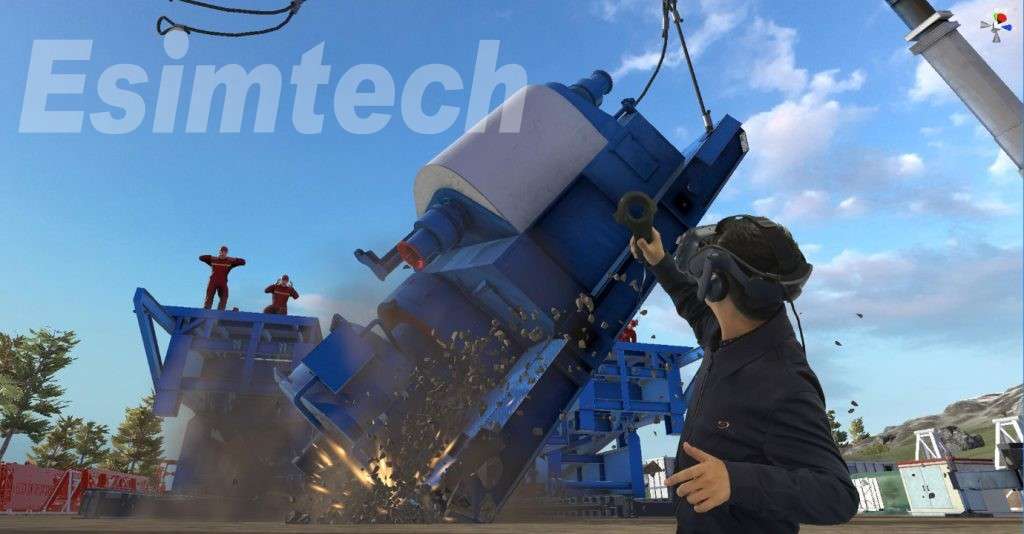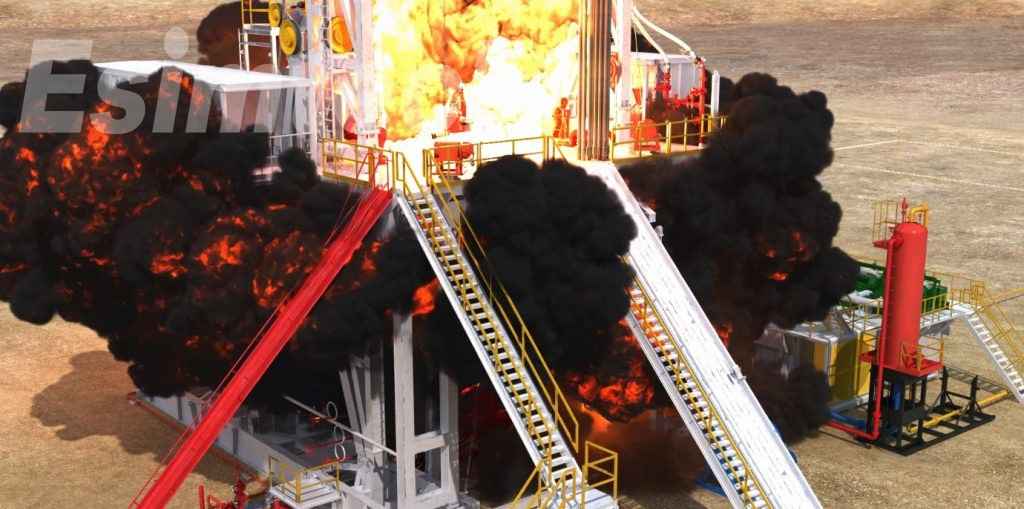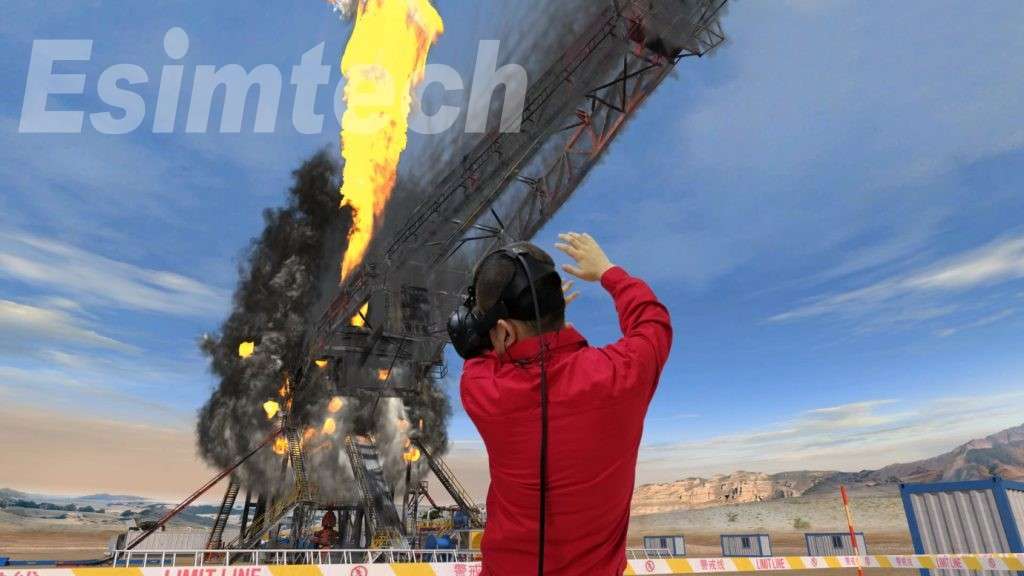VR Technology in Drilling and Well Control Training for the Oil and Gas Industry
Virtual Reality (VR) technology has become increasingly popular in the oil and gas industry, particularly in training and simulation applications. The use of VR technology in drilling and well control training offers a safe, controlled, and immersive environment for trainees to learn and develop their skills.

Traditionally, drilling and well control training has involved live training on a real oil rig. However, this type of training can be risky, expensive, and time-consuming. With the use of VR technology, trainees can experience a realistic simulation of an oil rig and learn in a safe and controlled environment.
VR technology enables the creation of 3D virtual environments that accurately mimic real-world oil rigs. The simulator can be programmed to replicate various drilling scenarios, allowing trainees to practice and develop their skills in a controlled environment. The simulator can also recreate hazardous situations that are difficult or impossible to replicate in real life, providing trainees with the opportunity to practice emergency procedures and response without the risk of injury or damage to equipment.
The use of VR technology in drilling and well control training offers several benefits, including improved safety, cost-effectiveness, realistic scenarios, and enhanced training. Let’s explore each of these benefits in more detail.
Benefit of Improved Safety for Drilling and Well Control Training
The oil and gas industry is known for its hazardous work environments, where accidents can lead to severe injuries and even loss of life. Safety is, therefore, a top priority in the industry, and training plays a critical role in ensuring that workers are equipped with the necessary skills and knowledge to work safely.
Live training on a real oil rig involves inherent risks, as trainees are exposed to real-life hazards. Even with the strictest safety protocols, accidents can still occur, which can lead to injury or damage to equipment. The use of VR technology in drilling and well control training offers a safer alternative to live training by allowing trainees to practice in a controlled environment.
In a VR simulator, trainees can experience realistic scenarios that mimic real-life situations, including emergencies and hazardous events. These simulations can be designed to provide trainees with an accurate representation of the hazards they may encounter on an oil rig, allowing them to practice the appropriate response without risk.
For example, a simulator can recreate a well control incident, which is one of the most significant risks in the oil and gas industry. A well control incident can lead to the uncontrolled release of oil and gas, resulting in a blowout. A blowout can have severe consequences, including loss of life and environmental damage.
In a VR simulator, trainees can experience a well control incident in a safe and controlled environment. They can practice the appropriate response, such as shutting down the well and controlling the flow of oil and gas. The simulator can also provide trainees with immediate feedback on their performance, allowing them to improve their skills and knowledge.
Moreover, VR technology can simulate conditions that are difficult or impossible to recreate in real-life training, such as extreme weather conditions or equipment malfunctions. In a simulator, trainees can practice responding to these scenarios in a safe and controlled environment without the risk of injury or damage to equipment.
In summary, the use of VR technology in drilling and well control training offers a safer alternative to live training, allowing trainees to practice in a controlled environment and experience realistic scenarios without risk. The simulator can also recreate hazardous scenarios that are difficult or impossible to replicate in real-life training, providing trainees with a unique learning experience.
Benefit of Realistic Scenarios for Drilling and Well Control Training

Realistic scenarios are an essential component of drilling and well control training, as they provide trainees with a realistic and immersive experience. VR technology enables the creation of 3D virtual environments that accurately mimic real-world oil rigs, allowing trainees to experience various drilling scenarios.
The simulator can be programmed to replicate a range of scenarios, such as drilling in different formations, dealing with different types of drilling fluids, and handling various well control incidents. This enables trainees to practice their skills and knowledge in a controlled environment and gain experience before applying what they have learned in real life.
The realistic scenarios can be designed to be as challenging or as simple as necessary, depending on the trainee’s skill level and experience. Trainees can practice various drilling techniques, such as tripping, circulating, and running casing, in a safe and controlled environment. They can also practice responding to various well control incidents, such as kick detection, blowouts, and loss of circulation.
The simulator can also recreate scenarios that are difficult or impossible to replicate in real life. For example, trainees can practice responding to complex well control incidents that require a high level of expertise. They can also practice emergency procedures, such as well shut-in, with realistic pressure and flow conditions.
The use of VR technology in drilling and well control training allows trainees to gain experience and confidence in dealing with various scenarios, without the risk of injury or damage to equipment. This enhances their ability to handle real-life situations, improving safety and reducing the risk of incidents.
In addition, the simulator can provide trainees with feedback on their performance, allowing them to identify areas where they need to improve. The simulator can also provide detailed reports on trainee performance, enabling instructors to monitor progress and tailor the training program to meet individual needs.

Benefit of Enhanced Training for Drilling and Well Control Training
The use of VR technology in drilling and well control training offers enhanced training. Trainees can receive personalized feedback and coaching to improve their skills and knowledge. The simulator can also provide trainees with a detailed analysis of their performance, allowing them to identify areas where they need to improve.
In addition to drilling and well control training, VR technology is being used in other areas of the oil and gas industry, such as maintenance and inspection. For example, VR simulations can be used to train workers on how to safely and effectively conduct maintenance on equipment and structures.
In conclusion, the use of VR technology in drilling and well control training offers a safe, controlled, and immersive environment for trainees to learn and develop their skills. The benefits of using VR technology in drilling and well control training include improved safety, cost-effectiveness, realistic scenarios, and enhanced training. As VR technology continues to develop and become more accessible, it is expected to play an increasingly important role in the oil and gas industry.
